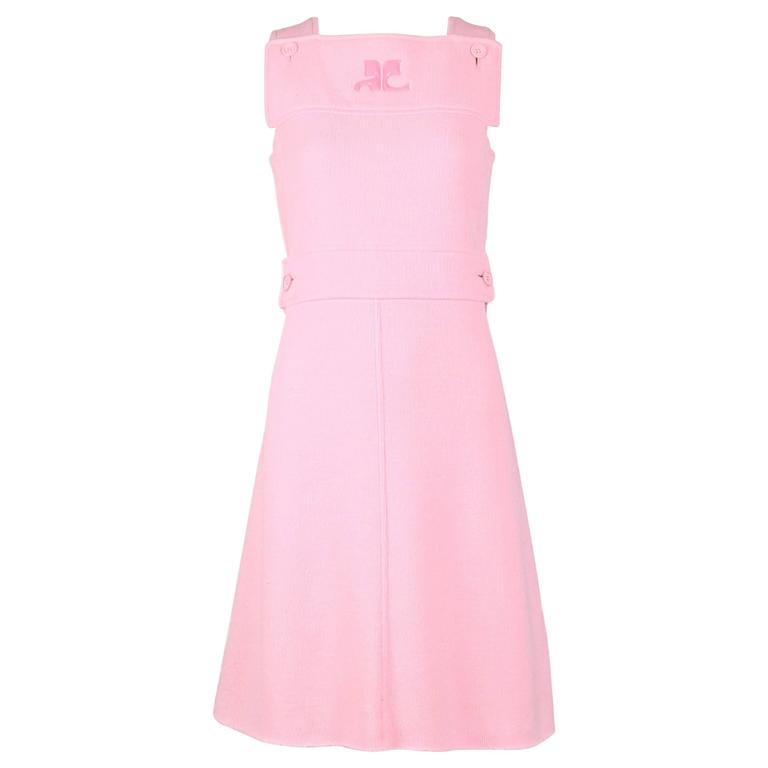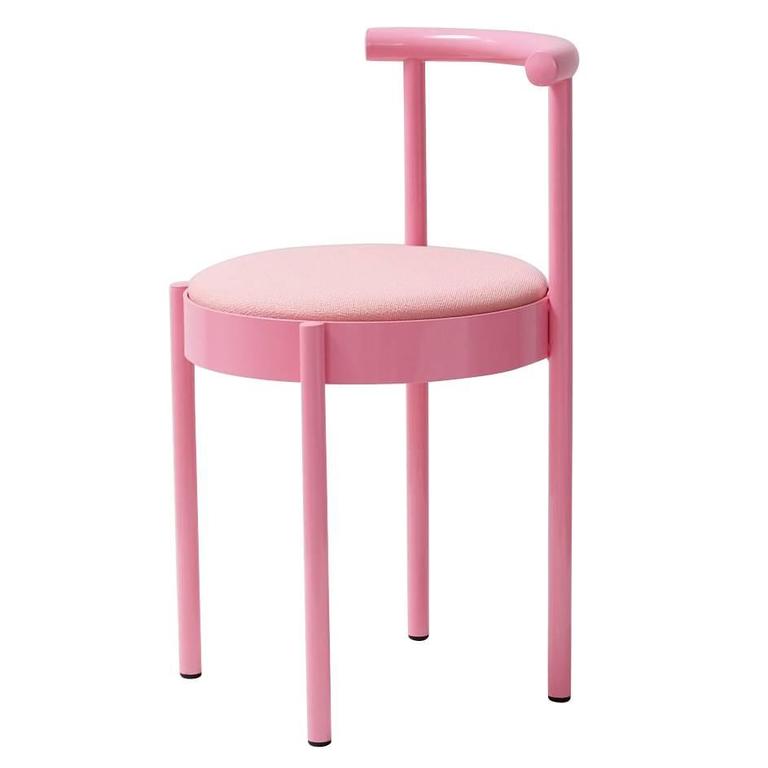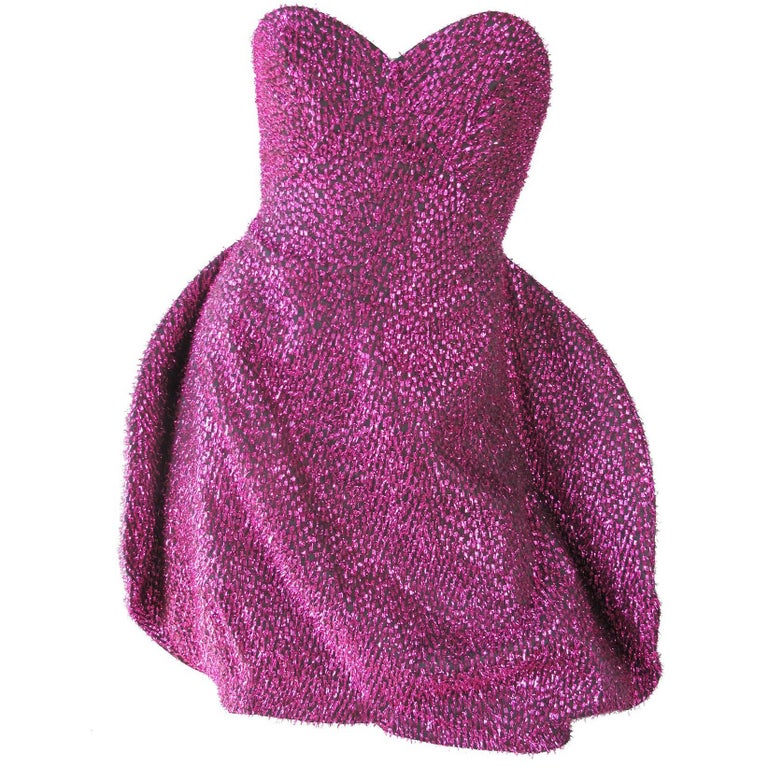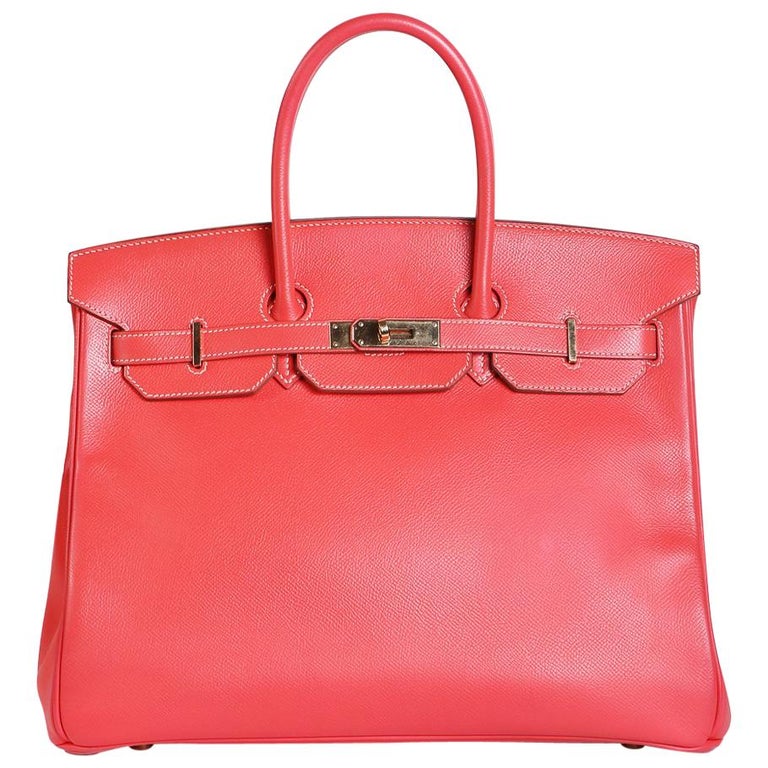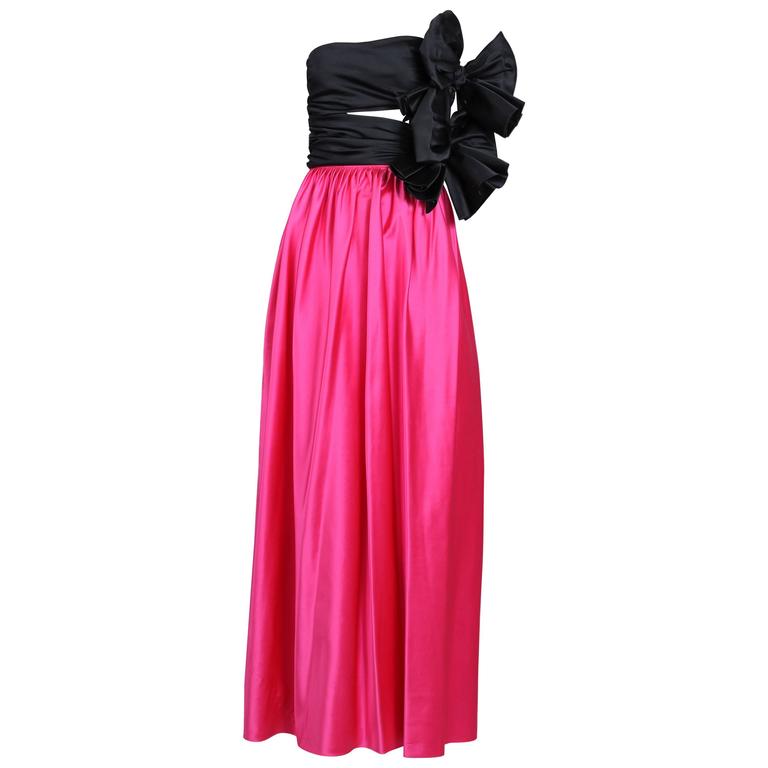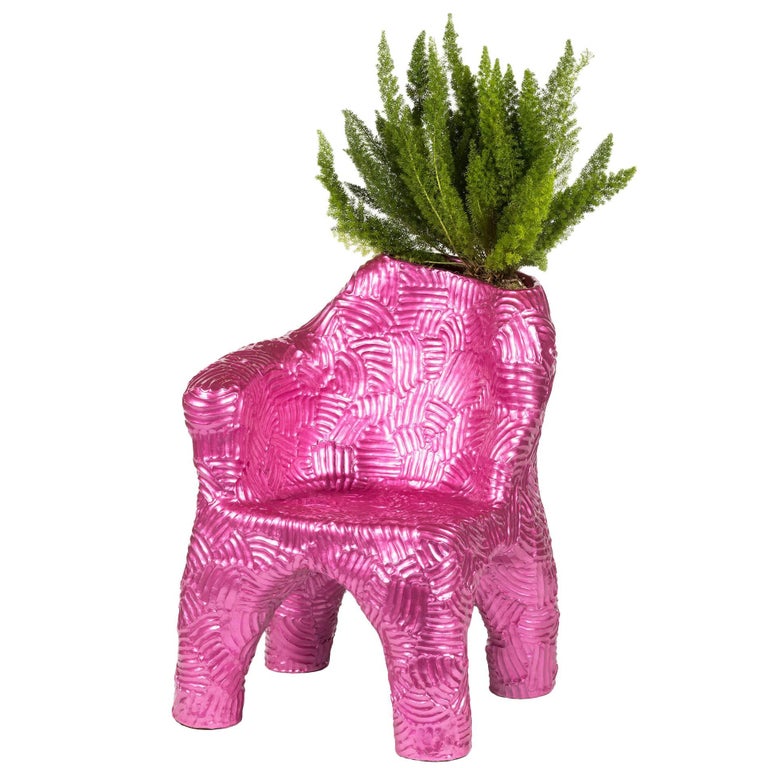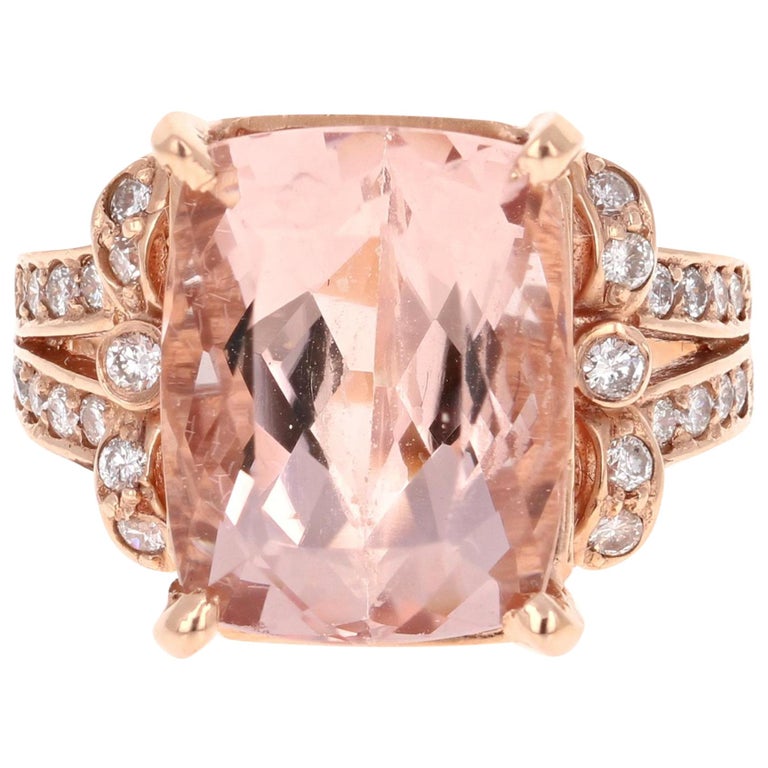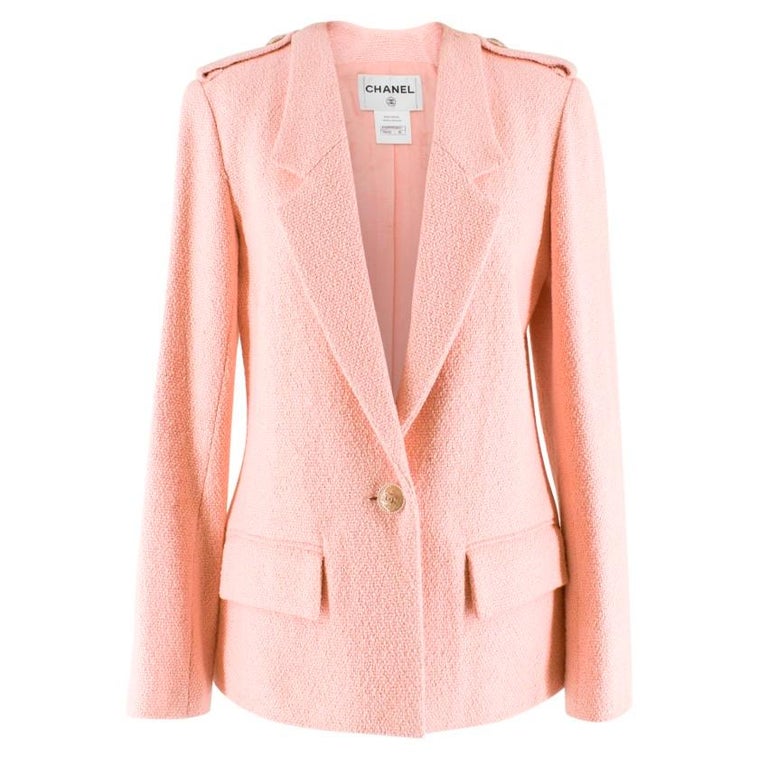
December 9, 2018This image from the Museum at FIT exhibition “Pink: The History of a Punk, Pretty, Powerful Color” features JeongMee Yoon’s The Pink Project — Jeeyoo and Her Pink Things, 2007 (photo courtesy of the Museum at FIT). Top: Rihanna (center) and models wear her Fenty Puma line, Spring/Summer 2017 (photo by Tim Walker, courtesy of Puma).
It’s a summer afternoon on Fire Island in the late 1970s. A young girl walks along the car-free streets of the village, her summer camp activities done for the day. She slips into one of the few shops and searches through the clothing. Then she sees it: a bathing suit in what she deems “the perfect shade of pink.” When her mother refuses to buy the suit, she throws a four-hour tantrum. Vintage-fashion dealer Rachel Zabar relates this story about her eight-year-old self. “I still remember exactly what it looked like,” she says. “Pink is my favorite color and, no joke, one of the things I love to talk about. I have been on the hunt for the perfect shade of pink since childhood — something like a surfer looking for the perfect wave.”
For some, pink has been a lifelong fascination, while for others it has been a shade to avoid, mock or deride for being overly feminine, frivolous and girly. Lately, pink has been enjoying a protracted moment in the spotlight — headlining museum shows, benefiting from high-status social media appearances and being featured in art, design and fashion publications. “Pink: The History of a Punk, Pretty, Powerful Color,” at New York City’s Museum at FIT through January 5, explores the many shades of the color and our shifting attitudes toward them (a companion book of the same name is published by Thames & Hudson). The show is divided into two main sections. The first gallery showcases around 30 pink dresses that date from the mid-19th century through the 1990s and range in color from delicate pastel to flaming fuchsia.

Left: Pink satin corset, France, 1880s. Right: Comme des Garçons 18th-Century Punk collection, Fall/Winter 2016 (photos courtesy of the Museum at FIT).
These garments represent the mainstream Euro-American view of pink as pretty and feminine. At the beginning of the frothy lineup, a two-piece silk taffeta dress from 1857, complete with fringe and a crinoline, is contrasted with a man’s simple black suit from the same period. Museum at FIT director Valerie Steele, who curated the show, explains that with the fall of monarchies and the rise of democracy and capitalism, bright colors and decoration — design elements that had been associated with the ruling classes — gradually disappeared from men’s attire and were redefined as feminine.
The second gallery is devoted to installations that examine pink in history and around the world. As Steele says in the show’s video introduction, “The second room complicates our image of pink.” In the 18th century, it was a stylish color for both men and women of the upper class. For example, a pink suit worn with a lace-adorned shirt was the height of sophisticated masculine fashion. Madame de Pompadour, mistress of French King Louis XV, also wore pink. She loved the color so much that she had the Sèvres porcelain factory make her a pink china service. To this day, the hue that was developed to please the king’s beloved is called Rose Pompadour, or Pompadour Pink.

The exhibit features an array of men’s and women’s clothing — from designers ranging from Charles James to Céline — in various shades of pink. Photo courtesy of the Museum at FIT
In the United States, pink began to be associated with little girls only in the 20th century. In the 19th century, babies and young children were dressed in white, which represented innocence and purity and was also easy to launder. Starting in about 1900 and accelerating three decades later, the fashion industry began to push color in infant wear as a way to sell more clothes, but as late as 1927, no consensus existed about which babies should wear pink. For example, both Marshall Field’s in Chicago and Filene’s in Boston presented the hue as the color for boys, while Macy’s in New York City, Bullock’s in Los Angeles and Wanamaker’s in Philadelphia pushed it for girls. Some in the pink-for-boys camp argued that it is a form of red, which is seen as bellicose and militaristic and thus more masculine. Blue was thought to be more appropriate for girls because of its association with the Virgin Mary, who is traditionally painted wearing the color.

Left: Pink silk taffeta afternoon dress, United States, ca. 1857 (photo courtesy of the Museum at FIT). Right: Moschino, Spring/Summer 2015 (photo courtesy of Moschino, Inc.).
Writers Sarah Archer and Glenn Adamson have penned articles about pink for art and design publications, and on the Instagram account @UnthinkPink, they curate a burgeoning collection of images featuring the hue, including shots of furniture, fashion, art and graphics. “Glenn Adamson and I started the Instagram feed because the color itself and its cultural footprint seemed like a moving target that’s impossible to peg,” Archer explains. “Pink comprises pop culture and fashion, playfulness and girlhood. It can be innocent and not so innocent, luxurious and tacky.” By 2016, it was clear that pink had begun to shed its overly sweet image. Pantone, a company that sets professional color standards, chose rose quartz as one of the colors of the year. In March, Apple released its hugely popular rose gold iPhone. In August, Véronique Hyland, writing in the Cut, gave the name “millennial pink” to the salmon-pink shade that was popping up in graphic design and fashion and trending among both men and women. And in January 2017, when millions of women around the world took to the streets as part of the Women’s March, demonstrating in support of women’s rights, diversity and tolerance, they sported cat-eared pink “pussy” hats in response to the newly inaugurated U.S. president’s boast about grabbing women. Pink had gained a wide and diverse popularity. The hue was no longer reserved for young girls.

This November 17, 2002, photo shows CODEPINK protesters in the midst of a four-month-long vigil in front of the White House. Photo courtesy of CODEPINK
At the FIT show, the installation “A World of Pink” demonstrates how pink has long been worn by both men and women in India and in the African diaspora. And, of course, Spanish bullfighters traditionally wear pink, as do Catholic bishops. “Punk Pink,” another FIT installation, showcases a few Comme des Garçons ensembles by Rei Kawakubo, along with a Zandra Rhodes dress and an iconic ACT UP T-shirt bearing the slogan Silence = Death above a pink triangle. Although the pussy hat has come under criticism from transgender women and women of color who feel that the brightly hued accessory does not represent them, a lone example from the Women’s March rounds out this installation, underlining the color’s controversial nature and its use as protest wear. The activist group CODEPINK: Women for Peace, which has protested against U.S. military drone strikes and the Guantanamo Bay prison, has also helped give pink a contemporary political edge, as has India’s Gulabi — or Pink — Gang, a women-empowerment group that physically fights rapists and domestic abusers and works to raise the economic status of women.

Yves Saint Laurent black sheath dress with Paris rose satin bow, Paris haute couture collection, 1983. Photo courtesy of the Museum at FIT
Pink is no longer just about sugar and spice and everything nice. Much as gay men in the 1970s reclaimed the pink triangle, which the Nazis had used to label and shame homosexuals in the camps, and some members of the LGBT community have reclaimed the word “queer,” contemporary activists have reclaimed pink, once associated with silliness and dependency, and coded it to signify womanhood and strength. Others, meanwhile, have taken to the hue for its perceived gender-bending qualities.
“We love pink! It is such a contentious color. Today pink is at the forefront of contemporary iconography,” say Marci Rosenberg of MRS Couture, adding, “Pink is for our new age, where acknowledging weakness is power, where the traits of femininity are destigmatized and turned into strengths, where tenderness and compassion are the driving fuel for change.” Today’s pink is powerful. It’s political and fun and androgynous and punk and sexy — and it’s still pretty, too.

